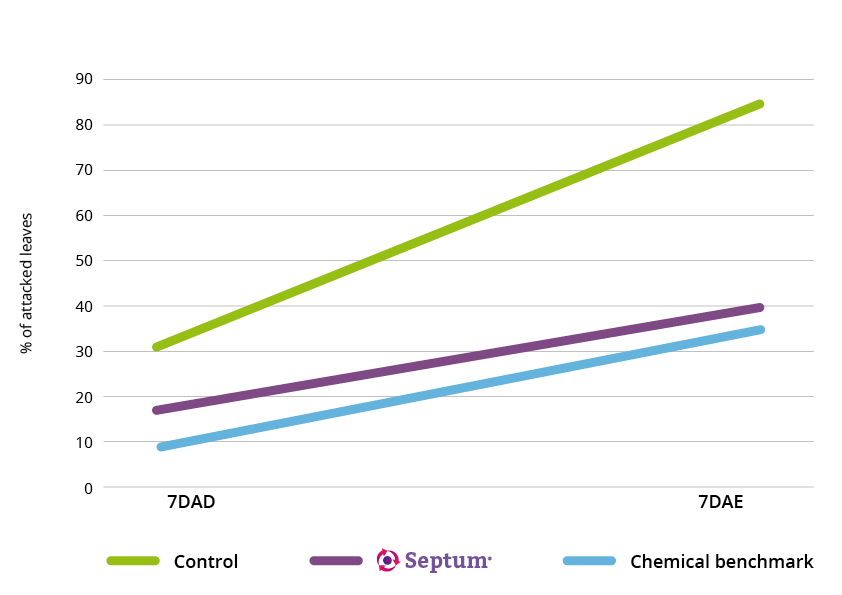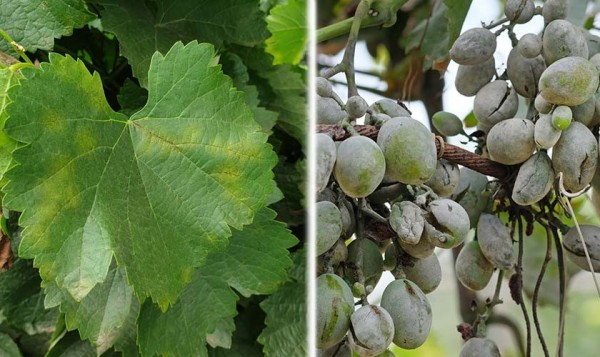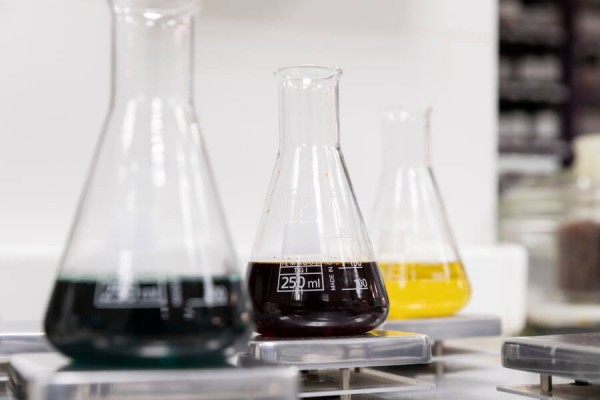Control of diseases in the grapevine: when prevention is the best and most valuable ally
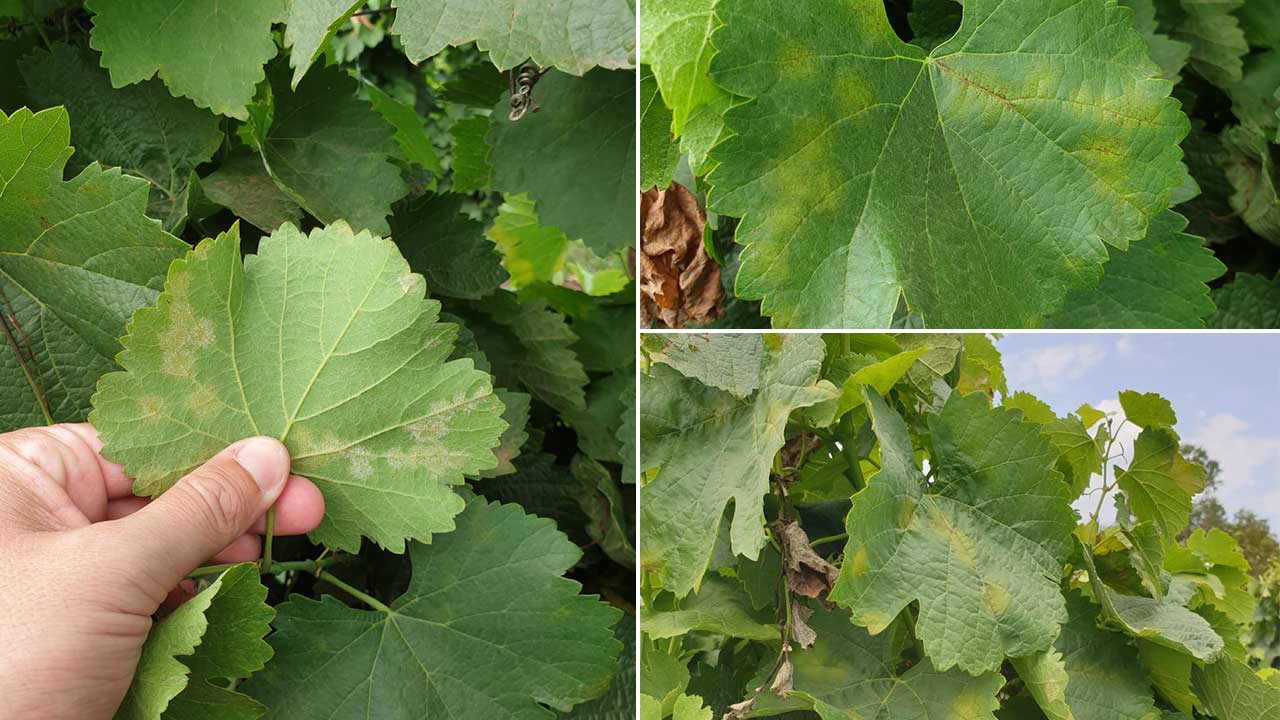
Obvious symptoms of downy mildew attack on grapevine leaves.
If we were to establish a classification of grapevine diseases, downy mildew would undoubtedly appear in one of the top positions. Plasmopara viticola, which is its scientific name, is one of the most serious and difficult pathogens to treat when it appears on grapevines. And when it occurs, it is best to act swiftly and with foresight, using alternatives such as Septum, a natural solution with fungicidal action by Seipasa, with a powerful preventive and curative effect on one of the most dangerous diseases affecting grapevines.
Plasmopara viticola is a spring disease, which finds its ideal setting in climates with warm temperatures and high relative humidity. Much has been said about the so-called '3 tens' rule (sprouts that are longer than 10 cm, rainfall greater than 10 L/m2 and an average temperature of around 10ºC) but the truth is that this grapevine disease appears during the vegetative development phase of the plant in environments with more than 75% relative humidity and temperatures of between 10 to 30º.
Although downy mildew of the grapevine becomes active in the spring, the fungus that causes it can survive the winter in the form of spores housed in vine buds and shoots. This is why it is important to destroy any tendrils and leaves that show symptoms of the disease to prepare in time for the next season.
The main warning signs of this disease of the grapevine are small, pale green oily spots that appear on the upper face of leaves, with a whitish, cottony appearance on the underside of the leaf. The leaves affected shrivel and eventually fall off the vine.
In the case of the grape bunches, the symptoms vary depending on the time when the outbreak occurs, from clear shrivelling to a reddish-brown colour of the berries. In all cases prevention is the vine growers best ally, especially at the onset of sprouting and when the environmental conditions favour the development of the disease.
Fungicides to protect against grapevine diseases
For this purpose, Seipasa has developed Septum, a powerful natural solution with fungicidal action in which key molecules from Equisetum arvense extract have been isolated and maintain an optimum equilibrium and balance to ensure maximum effectiveness of the product.
Based on its contents of phenols, flavonoids, saponins and silicic acid, Septum has a preventive action, providing plant cells with structural stability and mechanical resistance to the propagation of fungi as well as triggering a physiological defence response. Septum also has a curative action as it causes the breakdown and dehydration of fungal tissue.
Graph 1 shows the results of technical trials in which Septum's performance is evaluated in comparison to a control group and a chemical reference. The strategy adopted consisted of 6 applications every 7 days on a parcel of the Montepulciano grape variety. The graph clearly shows that while the incidence of the disease soars in the control group, Septum equals the effectiveness of the chemical reference, especially after the 5th application.
Graph 1: Incidence: % leaves attacked.
Graph 2 evaluates severity, i.e., the percentage of leaf surface area affected by the disease, with very similar results to the previous experiment. This means that Septum is just as effective as the chemical reference in controlling the advance of the pathogen.
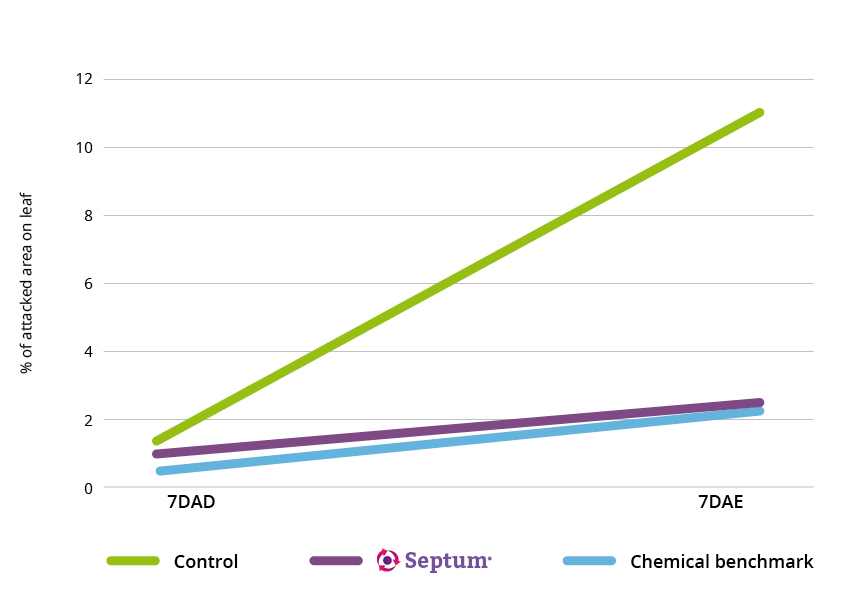
Graph 2: Severity % of leaf area attacked.
Plasmopara viticola, an undesirable travel companion
Septum is a tool registered for use in organic agriculture under UNE standards, with an extensive track record, providing an optimal solution to apply in integrated pest and disease management strategies, with the aim reducing the load of chemically synthesised active materials. Applying Septum to control grapevine diseases means no residues are left on grapes and they maintain all of their organoleptic qualities.
Septum is a real alternative for including in grapevine treatment programmes with the aim of replacing the synthetic chemical active ingredients that gradually are being withdrawn due to the tightening of the regulatory framework on the use of phytosanitary products. There is a real paradigm shift that is gradually gathering in force, together with an increasing awareness among grapevine growers.
As the title of this article says, prevention is the best ally against mildew, especially when the environmental conditions are a warning sign. If vine growers wait until clear symptoms of the disease appear, they may find that it is too late to take action.


